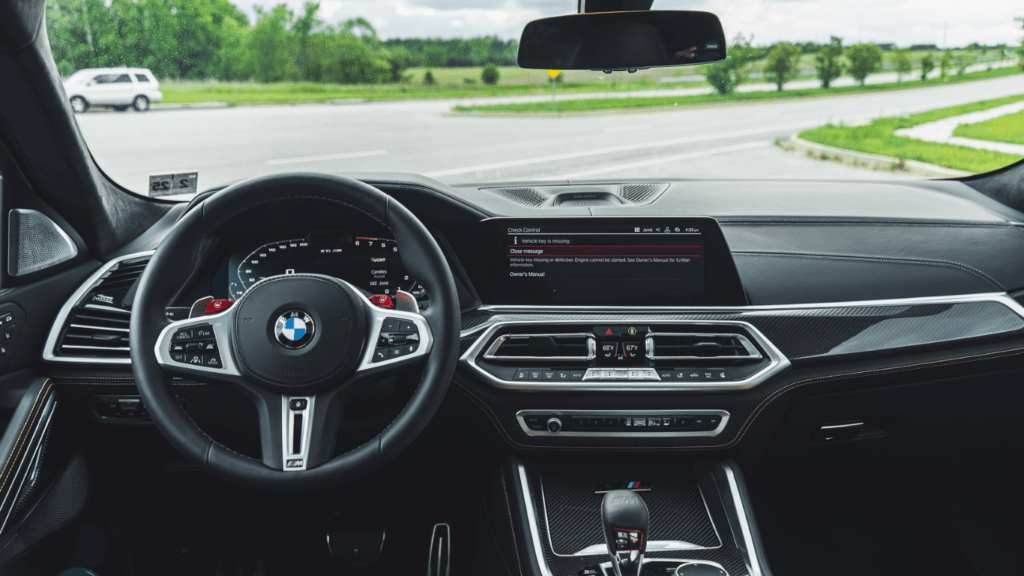Importance of Car Safety Features
Car safety features reduce accidents and fatalities. Technologies like ADAS and collision avoidance systems work actively to prevent crashes. From my perspective, these innovations are essential for road safety.
Advanced car safety technologies prevent accidents. For example, automatic emergency braking can stop the car if a collision is imminent. These systems lower the chances of human error, making driving safer for everyone.
Safety features also minimize injury severity. Features like:
- airbags
- crumple zones
absorb impact energy during crashes. This protection is crucial in high-speed accidents, reducing the risk of severe injury or death.
Investing in these technologies saves money. Fewer accidents mean lower insurance premiums and repair costs. Over time, these savings outweigh the initial cost of advanced safety features.
These innovations create better driving environments. Equipped with the latest safety technologies, cars contribute to more disciplined road behaviors. This collective improvement benefits all drivers.
Autonomous Driving Technologies

Autonomous driving technologies are transforming vehicle safety. These innovations reduce human error and enhance driving efficiency.
Adaptive Cruise Control
Adaptive Cruise Control (ACC) adjusts a vehicle’s speed to maintain a safe following distance. This system uses sensors and radar and is particularly useful during long drives or in heavy traffic. For instance, when a car ahead slows down, ACC reduces speed to keep a safe gap, reverting to the preset speed once traffic clears.
Lane Keeping Assist
Lane Keeping Assist (LKA) helps prevent unintentional lane departures. Using cameras to monitor lane markings, LKA gently steers the vehicle back into the correct lane if it detects drift. This feature is beneficial on highways and during long trips, providing an extra layer of safety by reducing the chances of side collisions.
Automated Emergency Braking
Automated Emergency Braking (AEB) activates when a collision is imminent. This system uses sensors to detect obstacles or other vehicles and applies brakes if the driver does not act in time. AEB can significantly reduce the severity of accidents or even prevent them entirely by reacting faster than a human driver.
Advanced Driver-Assistance Systems (ADAS)
ADAS continue to revolutionize vehicle safety with cutting-edge technology. These systems assist drivers in various situations, reducing human error and enhancing road safety.
- Blind Spot Detection
Blind Spot Detection identifies vehicles that may not be visible in your mirrors. Sensors monitor areas around the car, alerting you with visual or audio signals when another vehicle is in a neighboring lane. This feature helps you change lanes safely, reducing the risk of collisions.
- Rear Cross Traffic Alert
Rear Cross Traffic Alert warns you of approaching vehicles when reversing out of parking spaces. Sensors in the rear bumper detect oncoming traffic from the sides, providing alerts to prevent accidents. This system is particularly helpful in crowded parking lots and when visibility is obstructed.
- Sleep Detection Systems
Sleep Detection Systems monitor driver behavior to identify signs of drowsiness. Cameras and sensors track eye movements, steering patterns, and lane position. If the system detects fatigue, it issues alerts or vibrations to keep you awake. This technology is vital for long-distance drivers, helping prevent accidents due to drowsiness.
Enhanced Airbag Systems
Advanced airbag systems have significantly improved vehicle safety, offering protection tailored to various collision types and passenger positions. Here’s a look at some of the latest innovations in this area.
Curtain Airbags
Curtain airbags deploy from the vehicle’s ceiling to cover the side windows. These airbags effectively protect passengers’ heads during side-impact collisions. Some models extend further to provide protection in rollovers. Their design mitigates injuries by preventing contact with broken glass or other objects.
Knee Airbags
Knee airbags, located beneath the dashboard, deploy to protect passengers’ lower extremities during frontal collisions. These airbags reduce leg and knee injuries by distributing the force of impact. They also help maintain proper seating posture, preventing secondary injuries caused by unrestrained movement.
Adaptive Airbags
Adaptive airbags are intelligent systems that adjust inflation based on the severity of the crash and the passenger’s size and position. Sensors determine the optimal airbag deployment force, reducing the risk of injury caused by excessive force. This technology ensures that all passengers, regardless of size or seating position, receive appropriate protection.
Smart Infrastructure Integration
Smart infrastructure integration significantly enhances vehicle safety by enabling communication between cars and other elements of the road network.
Vehicle-to-Everything (V2X) Communication
V2X communication allows vehicles to interact with each other, infrastructure, pedestrians, and networks. Cars using V2X can exchange data on traffic conditions, hazards, and signal timings. For example, a car can receive a notification about an accident ahead, enabling timely action to avoid it. According to the National Highway Traffic Safety Administration (NHTSA), V2X technology could prevent up to 615,000 crashes annually. By improving real-time information flow, V2X aids in reducing congestion and enhancing road safety.
Traffic Sign Recognition
Traffic sign recognition uses front-facing cameras and AI algorithms to identify and interpret road signs, assisting drivers in adhering to speed limits and traffic rules. Once a sign is detected, the system displays it on the dashboard, ensuring the driver is aware of current road conditions. For instance, a driver might overlook a speed limit sign, but this system would promptly alert them. The technology not only helps in preventing violations but also ensures safer driving practices.
Intersection Assistance
Intersection assistance improves safety at intersections by providing warnings about potential collisions with crossing traffic. It uses vehicle sensors and V2X communication to monitor approaching traffic. If a risk is detected, the system alerts the driver or even applies brakes if necessary. Research from the Insurance Institute for Highway Safety (IIHS) shows that intersection assistance could reduce side-impact crashes by 20%. This feature is crucial for preventing accidents in urban areas with high traffic volumes.
Future Trends in Car Safety
Car safety is evolving rapidly, with numerous technological advances shaping the future of driving. These next-generation features are set to enhance road safety even further.
Artificial Intelligence and Machine Learning
AI and machine learning are transforming the way vehicles understand and interact with their environment. Machine learning algorithms analyze data from sensors and cameras to predict potential hazards and adjust driving behaviors accordingly. These systems can improve over time, becoming more effective at identifying and responding to various driving conditions. AI-powered driver monitoring systems detect signs of distraction or fatigue, ensuring timely intervention to prevent accidents.
Augmented Reality Dashboards
Augmented reality (AR) dashboards are revolutionizing driver interaction with vehicle information. These systems overlay critical information, like navigation instructions and hazard alerts, directly onto the windshield. This innovation reduces the need to glance away from the road, allowing for more focused and safer driving. AR dashboards can also highlight pedestrians, cyclists, and other potential obstacles in real-time, providing enhanced situational awareness.
Enhanced Vehicle Connectivity
Enhanced vehicle connectivity aims to create a seamlessly integrated driving experience. By connecting vehicles to smart infrastructure, drivers benefit from real-time traffic updates, road conditions, and hazard warnings. Vehicle-to-Everything (V2X) technology facilitates communication between cars, traffic signals, pedestrians, and other road elements. This connectivity improves decision-making and can potentially decrease accidents. Enhanced connectivity also supports over-the-air software updates, ensuring vehicles stay up-to-date with the latest safety features.




